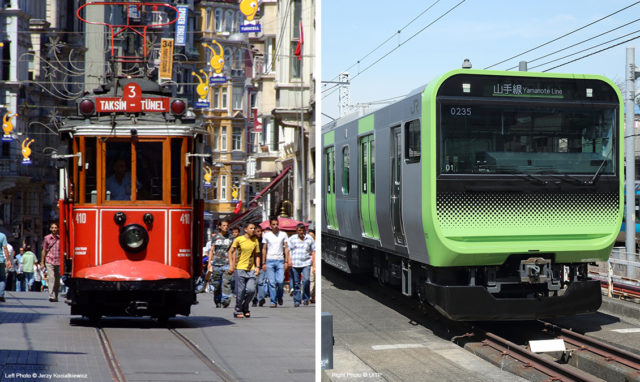
A New Approach for Public Transport
November 1, 2016 — Blog
Public Transport has continued to adjust and adapt to social and technological changes since the advent of the omnibus more than two centuries ago. It was said that stagecoaches, at the time an innovative mode of transportation that could be used by both the upper class as well as the ordinary citizen, started to run around the early 19th century in several European cities such as London and Paris. As time passed, the stagecoach evolved to use railway tracks. Its power source also changed, from horse to electricity, eventually giving way to the tramway. By 1885, this form of transport had grown so important that 50 tramway operators from Europe united to set up one of the first international associations to advocate the development of public transport. Today, it is known as the International Association of Public Transport (UITP).

Alongside the tramway, several other modes of urban transport, such as bus and rail, have cemented their place in the traditional, mass transit market. Even with the widespread appeal of private cars and global motorisation, public transport continues to play a dominant role in providing people all over the world with high-volume, urban mobility.
Nevertheless, the public transport scene is once again drastically transforming, as new players and services enter and compete in the urban mobility market. Significant developments in technology and the extensive use of the internet and smartphones are propelling the change.
Mobility, an Increasingly Crowded Space
The number of players is also growing. Besides traditional car manufacturers, tech giants such as Google are also trying their hand in developing an autonomous vehicle, which could be adapted for use in public transport. In Chiba, Japan, DeNA, a company whose main business is online gaming, has started its own shuttle bus service in a commercial shopping complex, using autonomous vehicles.
Popularised by companies like Uber, ride-sharing is another upcoming transport service sending shockwaves through the mobility world. Although debate rages on whether it should be strictly regulated with regards to safety and service standards, this type of service has great potential to be a ‘first and last mile’ complement to traditional, high-volume public transport.
In addition, the use of mobile applications coordinating on-demand buses and taxis is gaining the attention of policy planners in remote areas. In regions that do not have a high population density, it is impractical to invest vast sums on inflexible, traditional mass transit infrastructure like rail. Yet certain on-demand transport services can supply basic and efficient mobility to people in the area, while also reducing car dependency.
Public Transportation and Value for Cities
From my experience as the president of UITP, I hold that elements of existing public transport services might be replaced or fundamentally changed by these new players and services. What’s more, I also believe that traditional, high-volume services will be significantly influenced by newly arrived innovators. So, how should existing public transport react to these boundary-breaking shifts? Currently, traditional public transport services control high-volume urban mobility, but how can the industry survive the shocks created by mobility disruptions?
A great first step is for traditional, high-volume public transport services to introduce the concept of ‘innovation’, which not only means inventing new technology, but also creating new customer value. Innovative technology can reinvent existing service levels in public transport. Notable examples of this are the mobile applications created by public transport operators that provide valuable passenger information services. Investments like these and a customer-centered approach will be the key to innovation in public transport.
Secondly, traditional public transport services should continue to enhance their own value in society. High-volume public transport already provides countless benefits to cities including enabling a large number of people to travel safely, punctually, quickly and affordably. Still, these advantages are relative, not absolute. In a rapidly changing environment, traditional public transport services must courageously work towards expanding their societal value.
Lastly, traditional public transport services should seriously consider overall network optimisation, which needs to include several transit modes. A crucial goal of this would be achieving an enhanced ‘Shorter Total Trip Time’ (STTT), – a significant factor for all customers. To accomplish this target, close collaboration among existing, traditional public transport operators and authorities is indispensable.
Simply put, innovation, value-creation and optimisation will be the defining features of traditional high-volume public transport in the pursuit of providing useful urban mobility for yet another two centuries.